-
TrackoBit
Manage commercial vehicles with the new-age Fleet Management Software
TrackoBit -
TrackoField
Streamline your scattered workforce with Field Force Management Software
TrackoField -
Features Resources
-
Blog
Carefully curated articles to update you on industrial trends. -
White Paper
Insightful papers and analysis on essential subject matters. -
Glossary
Explore an alphabetical list of relevant industry terms. -
What’s New
Get TrackoBit & TrackoField monthly updates here. -
Case Study
Explore the cases we solved with our diverse solutions. -
Comparisons
Compare platforms, features, and pricing to find your best fit.
-
About Us
Get to know TrackoBit: our team, ethos, values, and vision. -
Careers
Join the most dynamic cult of coders, creatives and changemakers. -
Tech Support
Learn about our technical support team and services in detail. -
Events
Check out the exhibitions where we left our marks and conquered. -
Contact Us
Connect with us and let us know how we can be of service.
Top 12 Rider Scheduling Algorithms in Last Mile
- Author:Tithi Agarwal
- Read Time:7 min
- Published:
- Last Update: December 17, 2025
Table of Contents
Toggle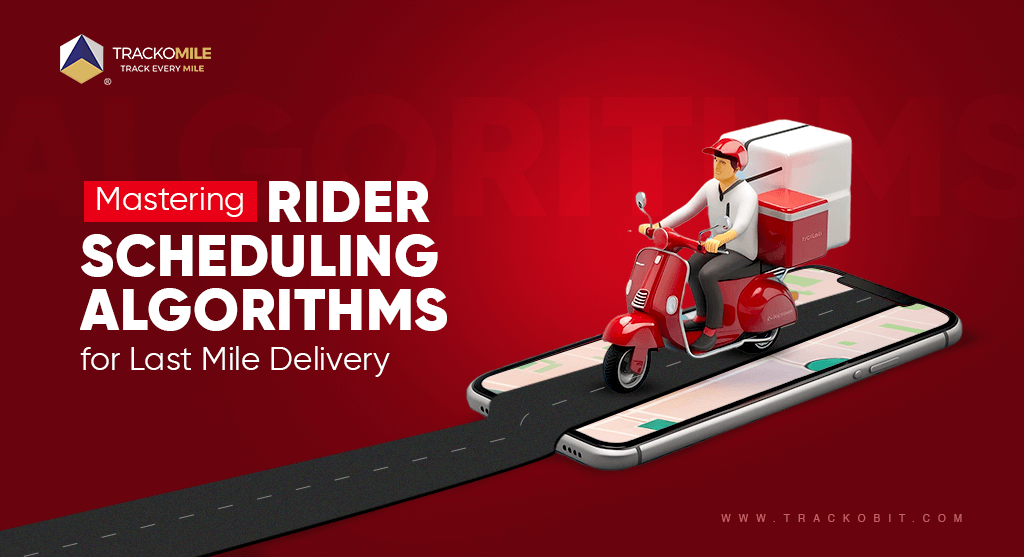
Want your deliveries to be fast, economical, and adhere to customer preferences and delivery time windows? Well, here is a list of rider scheduling algorithms that will help you achieve just that!
Table of Contents
Toggle
This article is for dispatchers in the last-mile delivery business who struggle to optimise the rider schedule so that every order is delivered on time and economically. They might often feel that peaking first attempt delivery is a far-sighted goal.
But they don’t have to feel this anymore as the efficient last mile delivery software at hand and leveraging the right algorithms makes it easy to achieve the goal.
As you already know, multiple algorithms are involved in optimising and orchestrating task/order scheduling, effectively allocating resources, setting priorities judiciously, and amplifying overall operational efficiency.
Here is an interesting guide to understanding all the possible algorithms that come together to form an ideal rider and order schedule. It offers insights that streamline scheduling and elevate the rider’s and operations’ performance to a new height.
What is Rider Scheduling and Why is it Important?
Rider scheduling and optimization use advanced algorithms and technology to map out the most efficient and effective delivery schedule. The route suggested rider roster takes into account various factors such as traffic, weather, vehicle capacity, and delivery time window to create optimized delivery schedules.
What Role Do Optimised Schedules Play in Last Mile Delivery?
In last-mile delivery, scheduling plays a crucial role in ensuring timely and efficient delivery to customers. These schedules help reduce travel distance and confusion and improve overall efficiency.
Such dispatching scheduling is essential for meeting customer expectations, maximizing profitability, and, to some extent, reducing the environmental footprint of delivery operations.
To put it very clearly, having a well-organized and efficient schedule can be the architecture of your business, enabling you to manage overflowing orders and orchestrate precise timing.
Top 12 Algorithms that Play a Vital Role in Optimising Schedules
1. First Come First Serve (FCFS)
FCFS operates on the basic principle of handling orders as they are received. This can be beneficial when managing straightforward delivery services. However, FCFS can be a total flop in a more complex business model.
For example, FCFS lacks the ability to consider the urgency and priority of the order, which can result in delays. As the business grows and expands, dispatchers should, in fact, use more sophisticated and tailored scheduling approaches, which are discussed further in this blog.
2. Priority Based Scheduling
Priority-based scheduling introduces a crucial element in the last-mile delivery scheduling process by assigning orders based on priority. This allows you to strategically prioritise high-impact or time-sensitive orders, ensuring time-sensitive orders are given preference over others.
This algorithm categorizes orders according to importance and urgency, ensuring that the essential orders are addressed promptly, thus contributing to improved client satisfaction and operational efficiency.
3. Round Robin Scheduling
Round Robin Scheduling is a method that aims to maintain a fair distribution of workload among last-mile delivery riders. In this algorithm, delivery tasks are cyclically assigned to riders, preventing any single rider from being overloaded with work. While round-robin scheduling promotes fairness in task assignment and contributes to a balanced workload among delivery riders, it’s important to consider the varying complexities of tasks.
In last-mile delivery scenarios where tasks have different levels of difficulty or time requirements, additional factors may need to be incorporated to ensure optimal efficiency in task allocation and rider utilization.
4. Time Window Scheduling
Time window scheduling focuses on optimizing on-time performance by specifying predefined time frames for delivery task completion. This algorithm is particularly beneficial in last-mile delivery services where strict adherence to timelines is critical, such as delivery of perishable goods or scheduled deliveries.
By establishing time windows for delivery task completion, you can ensure that deliveries are made within specified timeframes, increasing reliability and customer satisfaction. However, balancing stringent time constraints and the practicalities of delivery task completion is essential to avoid potential challenges and ensure operational effectiveness.
5. Optimised Algorithms
The optimization algorithm represents a leap into the realm of mathematical processes in last-mile delivery scheduling. This algorithm goes beyond simple task assignments and incorporates mathematical models to minimize downtime and maximize resource utilization in the context of delivery operations.
The optimization algorithm generates finely tuned schedules by analyzing factors like rider availability, travel times, and delivery complexities. This level of optimization not only reduces idle periods for your delivery riders but also contributes to overall cost-effectiveness by efficiently utilizing available resources. The optimization algorithm is a powerful tool for your organization aiming to achieve a delicate balance between operational efficiency and resource management.
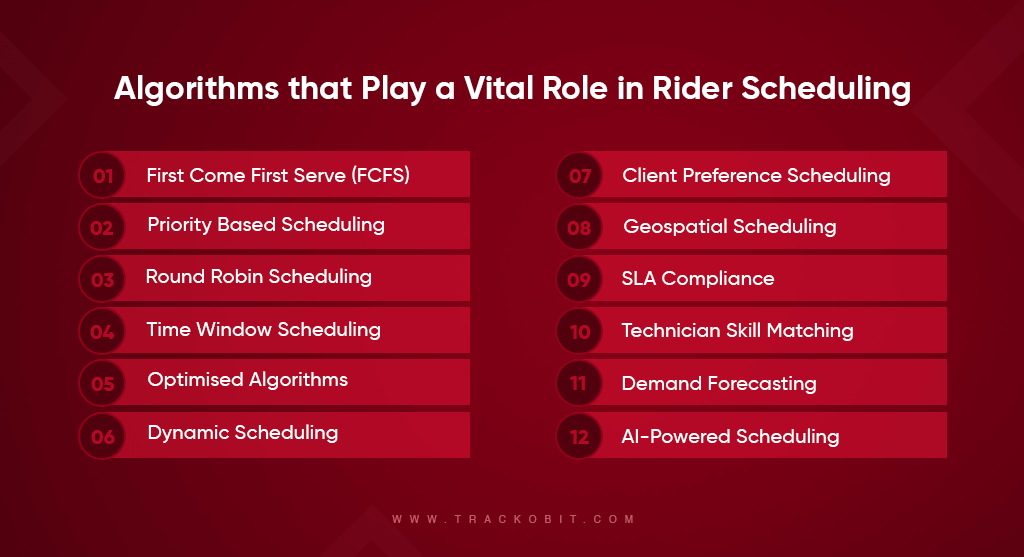
6. Dynamic Scheduling
Adapting to real-time changes is crucial in the dynamic and unpredictable last-mile delivery environment. Dynamic scheduling excels in scenarios where unexpected events, emergencies, or delays are commonplace in the delivery industry. This algorithm ensures that schedules remain fluid and responsive, allowing you to deploy resources where they are most needed. This is a key strategy for maintaining operational agility and addressing unforeseen challenges immediately in the delivery sector.
Furthermore, it enables you to navigate delivery uncertainties effectively, enhancing customer satisfaction and service reliability.
7. Client Preference Scheduling
Recognizing the significance of customer satisfaction, the client preference scheduling algorithm tailors schedules based on customer preferences. By considering factors such as preferred delivery times or specific delivery personnel, this algorithm ensures a personalized and satisfactory customer experience. Client preference scheduling is a testament to the growing importance of user-centric approaches in modern delivery management within the last-mile delivery industry.
This algorithm meets the technical requirements of delivery management and aligns with the customer’s preferences, contributing to enhanced customer loyalty and positive brand perception. As last-mile delivery organizations prioritize customer satisfaction, the client preference scheduling algorithm becomes valuable for building strong, long-lasting customer relationships.
8. Geospatial Scheduling
Geospatial Scheduling leverages location data to optimize travel routes for your delivery riders. This algorithm considers the geographic considerations of delivery assignments, aiming to minimize travel time. For last-mile delivery organizations with widespread delivery areas, geospatial scheduling becomes a valuable tool for enhancing cost-effectiveness and improving service delivery.
By efficiently planning travel routes, delivery tracking solutions can help achieve cost savings associated with reduced travel time and fuel consumption. Furthermore, this aligns with the broader goal of operational efficiency, contributing to a more sustainable and streamlined last-mile delivery process.
9. SLA Compliance
Service Level Agreements (SLAs) are contractual commitments that you make to your customers regarding the delivery of services. This algorithm is designed to not only meet but exceed these agreements. By prioritizing delivery tasks based on SLA requirements, you can ensure that critical assignments receive the attention they need to meet service-level expectations.
SLA compliance is crucial for maintaining customer satisfaction, building trust, and upholding the contractual commitments made to customers in the last-mile delivery sector. This algorithm becomes a vital factor for delivery industries where meeting specific service levels is crucial.
10. Technician Skill Matching
The rider skill matching algorithm addresses the importance of aligning the right skills with the right delivery tasks. Organizations can significantly improve their delivery success rates in the last-mile delivery industry by ensuring that riders with the appropriate expertise are assigned to specific assignments. This enhances operational efficiency and contributes to customer satisfaction by ensuring deliveries are made promptly and accurately.
Rider skill matching recognizes the diversity of skills within a rider workforce and aims to optimize the delivery task assignments based on individual strengths. As last-mile delivery organizations focus on delivering high-quality services, this algorithm becomes essential to their scheduling strategy.
11. Demand Forecasting
In the ever-evolving landscape of last-mile delivery management, the demand forecasting algorithm analyzes historical data and trends to provide insights into future delivery demand. Armed with this knowledge, delivery organizations can adopt a proactive approach to scheduling, optimizing resources, and staying ahead of customer needs.
This approach becomes a proactive strategy for resource management, allowing delivery organizations to allocate resources efficiently and ensure they are adequately prepared to meet anticipated delivery demand. This algorithm is a valuable tool for last-mile delivery organizations seeking to stay agile and responsive in a rapidly changing delivery environment.
12. AI-Powered Scheduling
AI-powered scheduling represents integrating machine learning capabilities into the last-mile delivery scheduling process. This advanced algorithm takes scheduling to a new level by predicting delivery job durations using sophisticated algorithms.
Rather than relying solely on historical data, AI-powered scheduling proactively optimizes schedules based on predictions. By dynamically adjusting to evolving conditions and factors influencing delivery job durations, this algorithm enhances resource allocation and overall operational efficiency in the last-mile delivery industry.
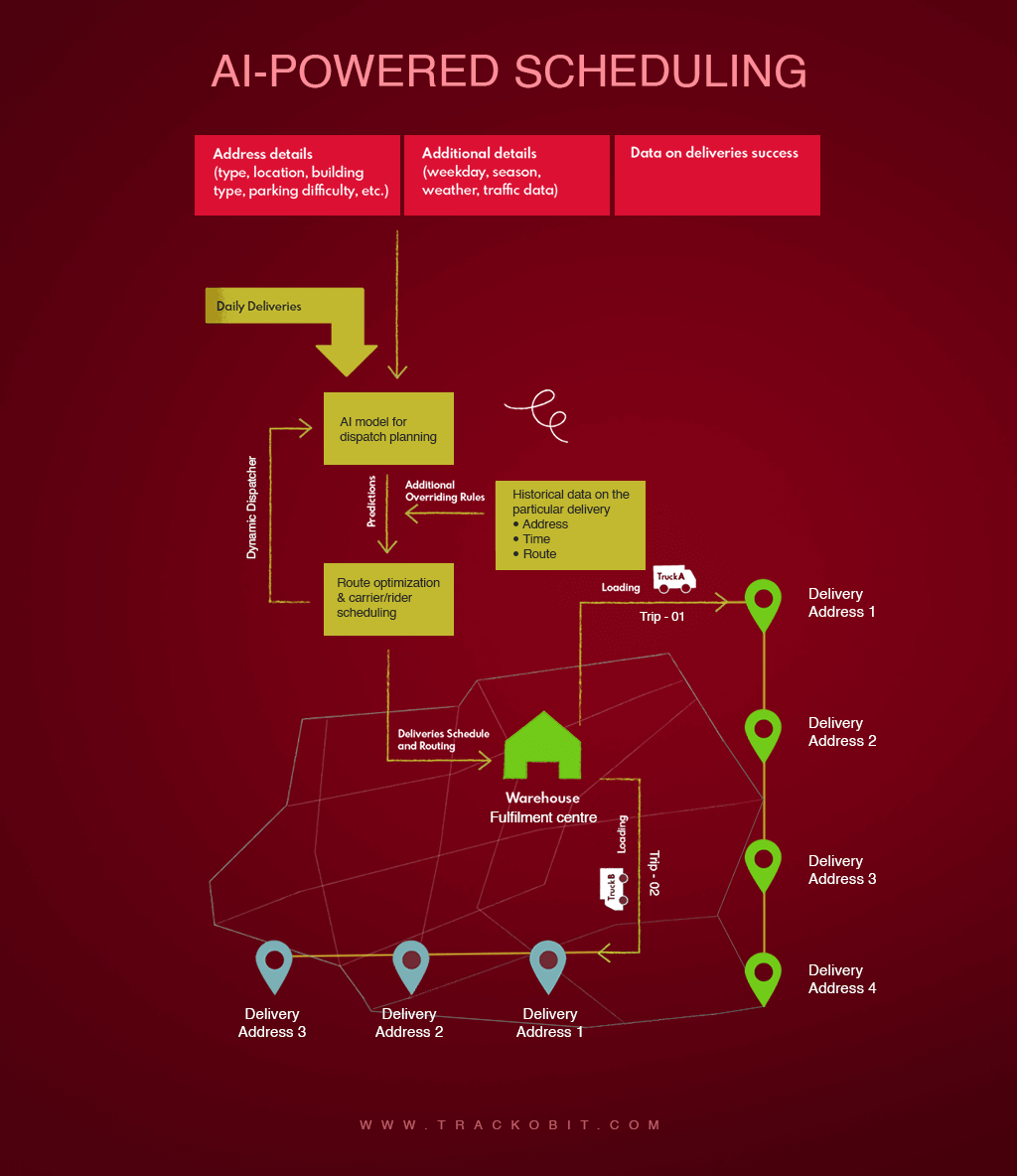
Conclusion
As discussed, the above last mile rider scheduling algorithms serve a specific purpose, addressing unique challenges and opportunities within the last-mile delivery environment. From optimizing delivery routes to improving customer satisfaction, these algorithms play a vital role in achieving operational excellence. However, to stay ahead of your competitors in a last-mile delivery business, it’s not just about algorithms; it’s about the holistic adaptation of cutting-edge technology.
Implementing scheduling algorithms effectively requires the right resources and infrastructure. Investing in advanced last-mile delivery software, like TrackoMile, equipped with order scheduling and capacity management capabilities, can revolutionize your last-mile delivery operations. Our software analyzes vast amounts of data, including historical delivery performance, traffic patterns, and customer preferences, to generate optimized delivery schedules in real time.
Schedule a free demo with TrackoMile to clear away cobwebs of doubts!
Tithi Agarwal is an established content marketing specialist with years of experience in Telematics and the SaaS domain. With a strong background in literature and industrial expertise in technical wr... Read More
Related Blogs
-
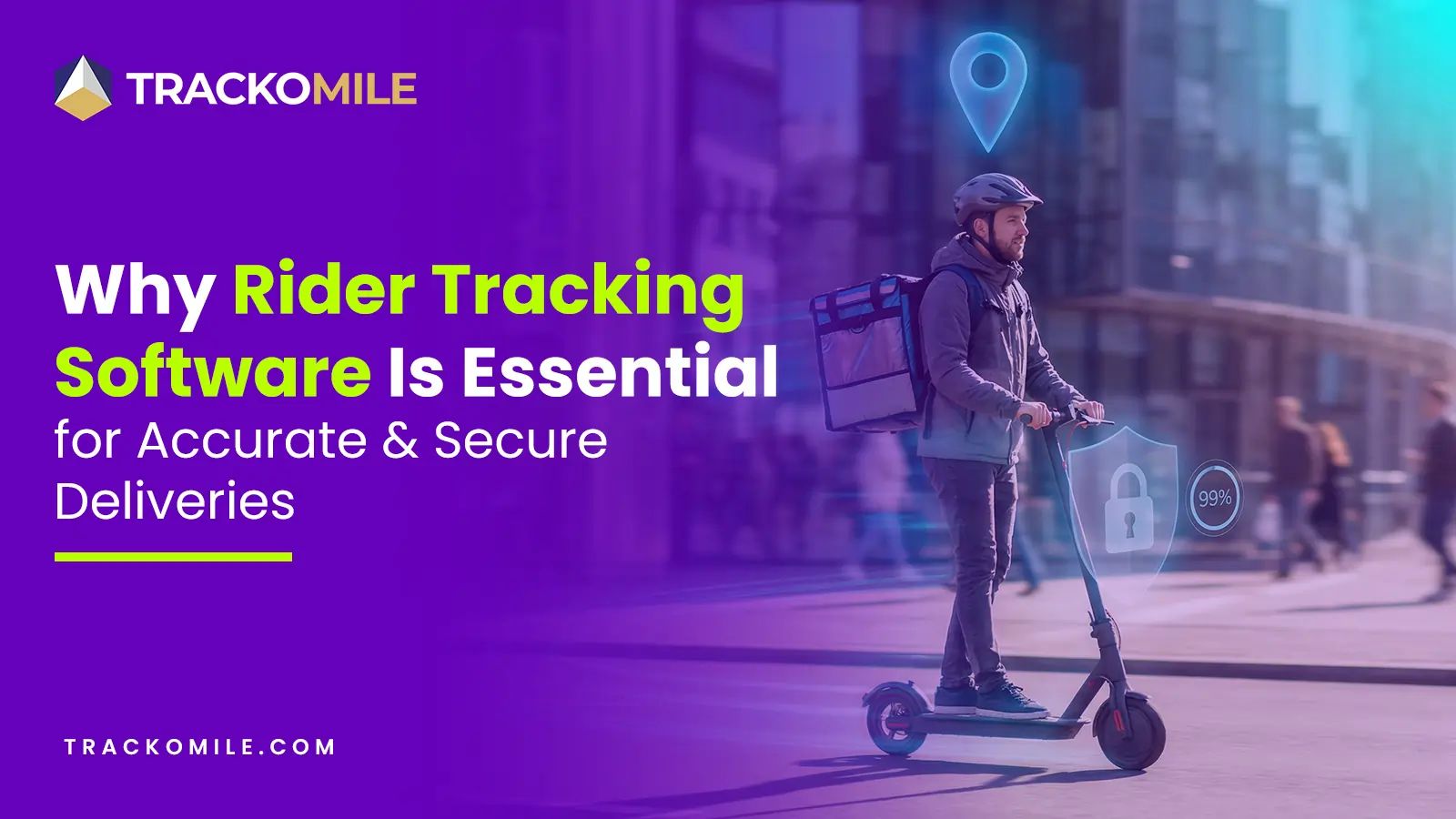
How Rider Tracking Software Improves Delivery Accuracy and Reduces Fraud
Tithi Agarwal December 8, 2025Rider tracking software improves delivery accuracy with real-time GPS visibility and automated ePOD. It also enables route optimisation and fraud…
-
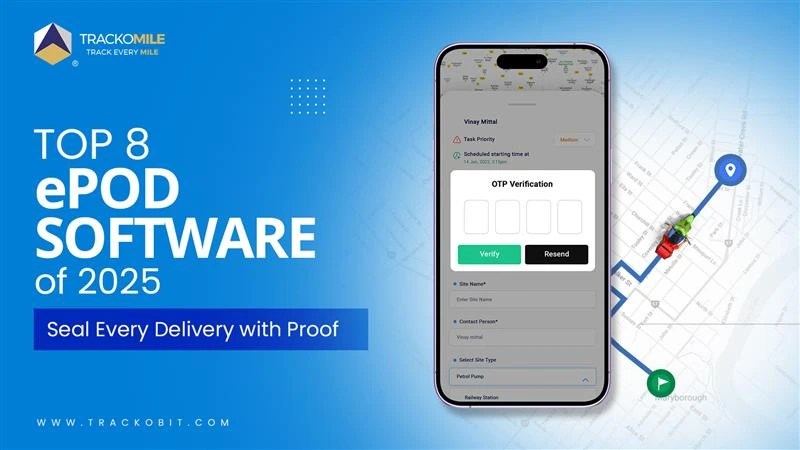
Top Electronic Proof of Delivery (ePOD) Software in 2026
Tithi Agarwal September 25, 2025Electronic proof of delivery has become the backbone of modern logistics. Explore the top 8 ePOD software in 2026 and…
-

3PL vs. 4PL: Which is Best for Your Business?
Tithi Agarwal September 25, 2024Confused about choosing between 3PL and 4PL for your retail supply chain? Read this blog to find out which is…
-

What is Payload Capacity? Payload Capacity Vs. Towing Capacity
Tithi Agarwal September 10, 2024Payload capacity is the total weight a vehicle can safely carry, and it is crucial for safety and compliance. Exceeding…

Subscribe for weekly tips to supercharge your last-mile delivery.
Your inbox awaits a welcome email. Stay tuned for the latest blog updates & expert insights.
"While you're here, dive into some more reads or grab quick bites from our social platforms!"Stay Updated on tech, telematics and mobility. Don't miss out on the latest in the industry.
We use cookies to enhance and personalize your browsing experience. By continuing to use our website, you agree to our Privacy Policy.


































